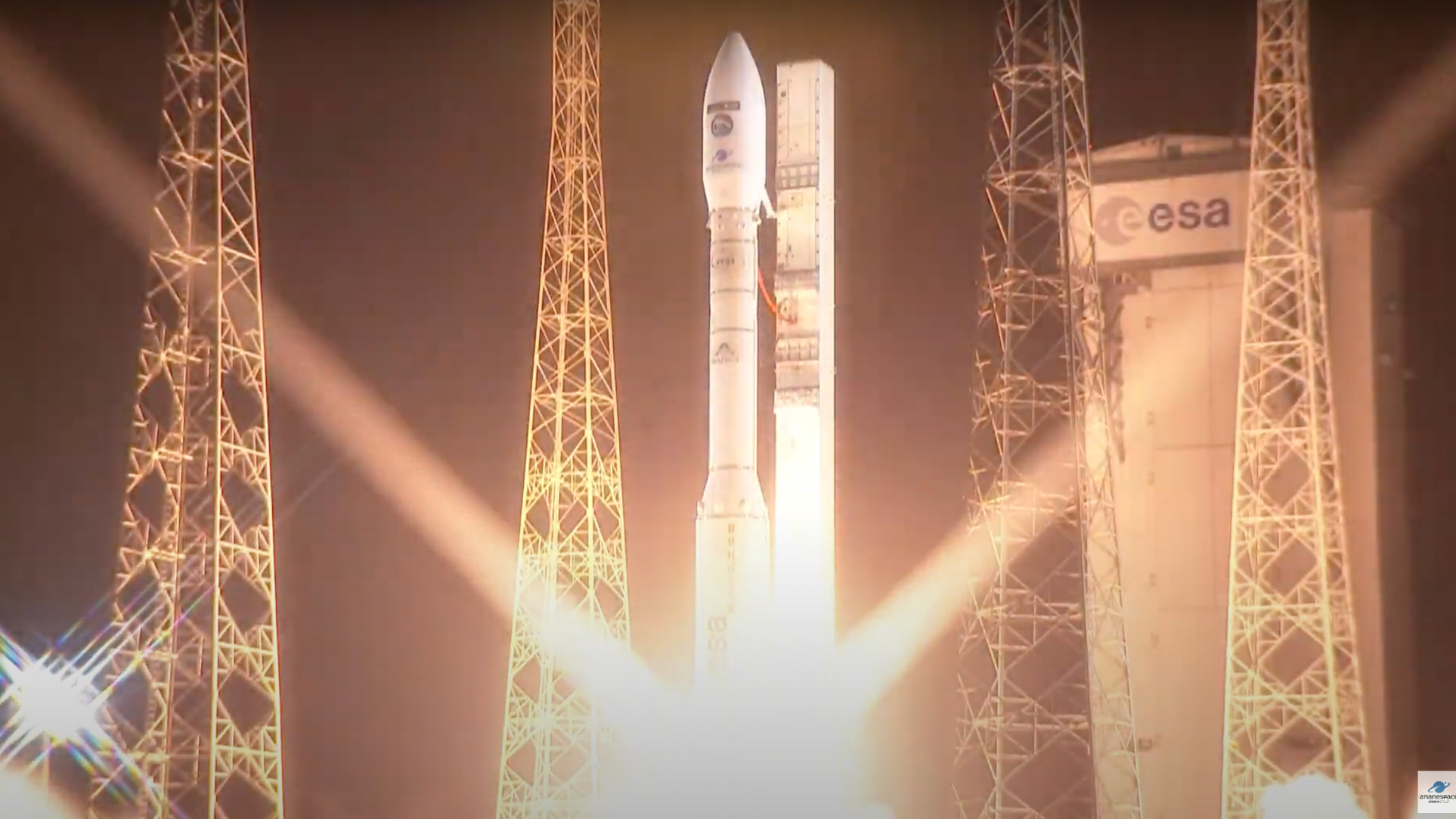
Europe's Vega rocket aced its final mission tonight (Sept. 4).
The Vega, which is operated by France-based company Arianespace, lifted off from Europe's Spaceport in Kourou, French Guiana tonight (Sept. 4) at 9:50 p.m. EDT (10:50 p.m. local time in Kourou; 0150 GMT on Sept. 5), carrying the Sentinel-2C Earth-observing satellite skyward. Launch had been scheduled for yesterday (Sept. 3), but electrical issues with ground links scuttled that try.
Sentinel-2C was deployed into orbit 57.5 minutes after launch as planned, prompting applause and handshakes in mission control.

Vega stands about 100 feet (30 meters) tall and can deliver 3,300 pounds (1,500 kilograms) of payload to a circular orbit 435 miles (700 kilometers) above Earth, according to Arianespace's spec sheet.
Related: Vega rocket launches Earth observation satellite and 4 cubesats into orbit
The rocket debuted in February 2012 and has now flown a total of 22 missions, 20 of them successful. Tonight's mission was the last ride for the standard version of the Vega; Arianespace is transitioning its smallsat operations to the new, more powerful Vega C.
The Vega C has launched twice to date — in July 2022, then again in December of that year. The first mission was successful but the second failed due to a flaw in the rocket's second-stage nozzle. The Vega C is scheduled to return to flight late this year.
The final Vega launch services Sentinel-2, a mission run by Europe's Copernicus Earth-observation program. Sentinel-2 uses twin satellites — currently, Sentinel-2A and Sentinel-2B — to study our planet from 488 miles (786 km) up, collecting "high-resolution optical imagery for a wide range of applications including land, water and atmospheric monitoring," according to an ESA mission description.
Sentinel-2C is designed to replace Sentinel-2A, which launched atop a Vega rocket in June 2015. Sentinel-2B will be replaced by Sentinel-2D, which does not yet have a firm launch date.
Editor's note: This story was updated at 8:20 p.m. ET on Sept. 3 with news of the scrubbed attempt on that day due to electrical issues. It was updated again at 10:05 p.m. ET on Sept. 4 with news of successful liftoff, then again at 10:50 p.m. ET with news of satellite deployment.







